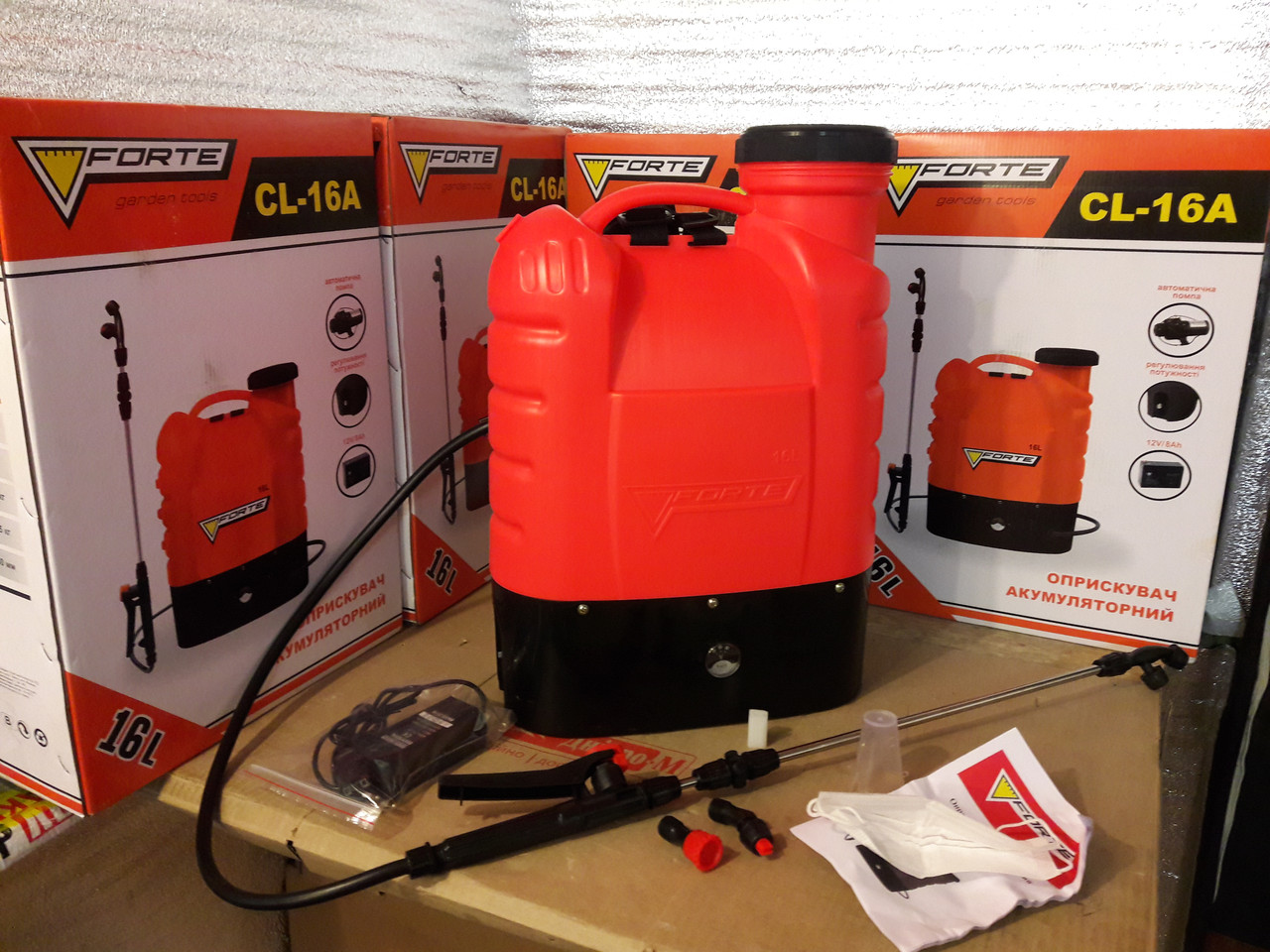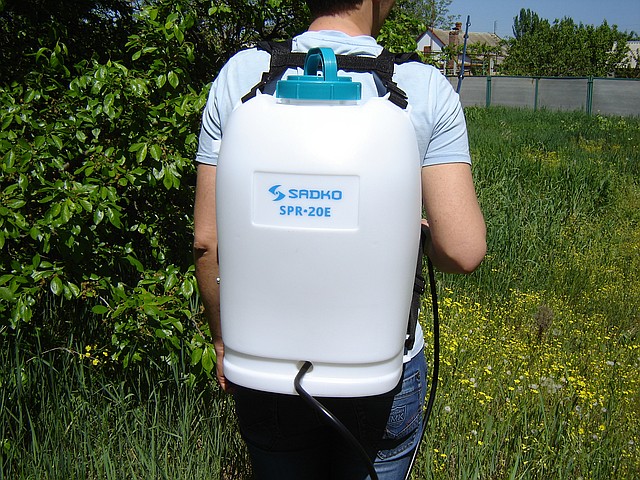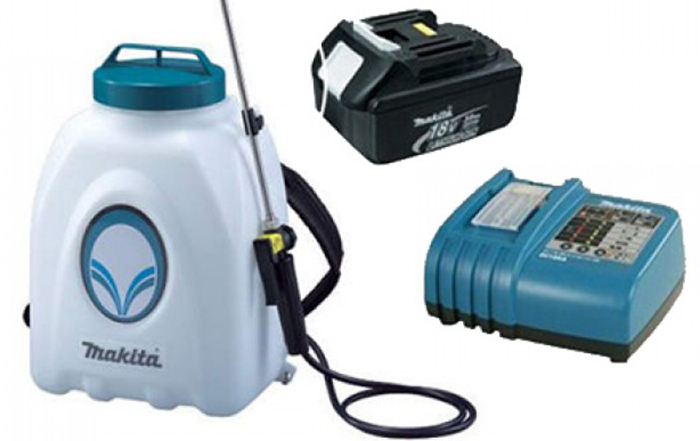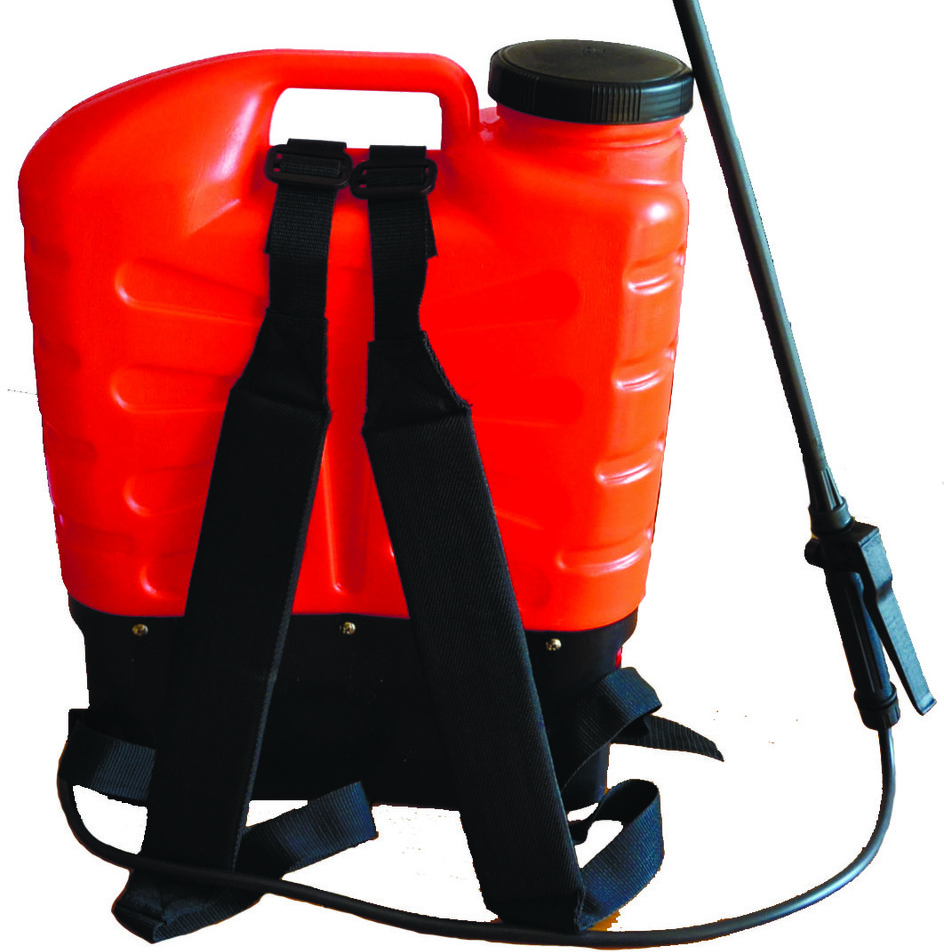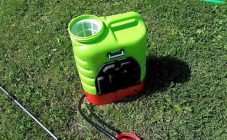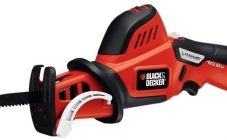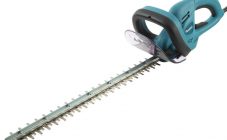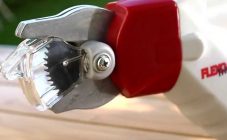Content:
Most summer residents and gardeners, when caring for plantings, are faced with the problem of protection from pests and insects that pose a serious threat to the future harvest. For these purposes, chemical preparations are traditionally used, but their manual use is associated with great difficulties. A good way out of this situation is to purchase a sprayer that runs on a battery and is placed in a small backpack behind your back.
How the battery sprayer works
The battery-powered sprayer is similar in structure and principle of operation to electric units powered by an autonomous power source. It includes the following units:
- A capacious plastic tank with a built-in compressor and an electric motor (they are usually located at the bottom of the backpack).
- A sprayer (also called a sprayer), in the form of a rod with a hose and a working nozzle.
- Rechargeable battery for 12 or 18 V.
When the sprayer is in operation, the electric motor is driven by a battery, which, as it is "loaded", can be charged from the mains (a special charger is included in the working kit). The product also comes with a set of attachments of different performance. Using them, it is possible to process areas several times larger than with manual work.
During one charge of the portable battery, the battery garden sprayer is capable of spraying up to 500 liters of protective compound, which guarantees reliable protection of plantings in a small personal plot.
Scope of application of the cordless sprayer
High efficiency and economical consumption of protective agent make the battery backpack sprayer irreplaceable in the following cases:
- If necessary, protective spraying of garden and vegetable garden plants.
- In the case of processing greenhouse (greenhouse) vegetation and backyard plantings such as "hedge".
- For protective disinfection of areas of nurseries and pens for pets.
In addition, this device can be used in other areas. It is often used for disinfection of utility rooms, as well as for the cleaning treatment of residential and non-residential buildings.
After filling the tank with clean water, the sprayer is suitable for washing cars, window panes, as well as garden equipment available on the site. When filled with whitewash or bleach, it will be suitable for the protective treatment of garden trees and toilets. During construction work, it can be used as a spraying device for finishing operations and whitewashing.
The decorative coatings formed with its help fully comply with the current building codes (subject to the application technology).
Review of the best atomizers
The following models are among the best domestic knapsack-type sprayers:
- "Clever".
- "Comfort".
- "Knight".
- "Caliber".
- "Makita" and others.
Technical characteristics of devices:
Battery garden sprayers "Clever" are a good budget-class option, related to convenient multifunctional devices.
Its main characteristics:
- five-liter plastic tank is made of material resistant to aggressive environments;
- brass working rod has a length of about 38 cm;
- total weight (without liquid content) - 3 kg;
- operating time from one charge - up to 2 hours (supply voltage - 12 V).
In the line of this manufacturer, there are a number of models belonging to the same budget category. These include the battery sprayer "Comfort", a feature of which is the presence of two versions at once. They differ in the number of built-in pumps (one or two) and, therefore, in performance.
The volume of the tanks of these models is 12 and 16 liters. The operating time from one charge varies from 2 to 6 hours. The bodies of these products are made of extra strong polypropylene, and plastic brass is used for the manufacture of the feeding tube.
Budget models of knapsack sprayers "Vityaz" are equipped with a meter telescopic tube, and a flexible hose 120 cm long is suitable for spraying shrubs and trees. The device is characterized by increased productivity (0.7-1.7 l / min); its weight in working position is 5.5 kg.
The high-performance knapsack sprayer of the "Caliber" type has a 15 liter tank and can operate in a continuous mode for about 2 hours.
When using "Caliber", special problems usually do not arise, which is explained by the high technical performance of the device.
Sprayers brand "Makita" battery belong to the samples of universal gardening equipment, designed for a supply voltage of 18 V and carried in a backpack behind the back. The capacity of the tank is 10 liters, and the dimensions correspond to the indicators of 315 × 225 × 415 mm.
How to make a sprayer with your own hands
For self-manufacture of the simplest knapsack sprayer for the garden, you will need the following main parts and consumables:
- An old plastic canister with a capacity of about 10-12 liters.
- 12V car foot pump (compressor).
- Valve nipple.
- A boom, hose and spray nozzle (they are sold in any garden store).
- Fitting straps (from an old backpack, for example).
- Strong, wide tape.
A container from an idle pump sprayer ("Quasar", for example), which does not have a leak and has an air valve, can also be used as a reservoir. If the supply hose and the rod with the nozzle have survived from it, the procedure for manufacturing the structure will be greatly simplified.
The procedure for assembling a homemade sprayer according to the first option (from an old canister) looks like this:
- First, a hole is drilled in a plastic container, into which a car nipple with a compressor connected to it is then inserted.
- For reliable sealing of the hole for the sealing washers, the sealant is “blown out” and gaskets cut from rubber are additionally placed.
- The compressor is connected to a 12 V battery and both of them are attached to the canister by means of durable wide adhesive tape.
- Now it remains to drill a hole for the outlet hose and make a reliable and sealed joint (a spray nozzle is fixed at its end).
- At the final stage, suitable shoulder straps from the old backpack are attached to the plastic container.
When assembling according to the second option (from the old sprayer model), all the described steps are repeated, except for the penultimate step.
Sprayer maintenance
Caring for a garden sprayer is reduced to maintenance operations that allow you to keep the device in working order for a long time.To do this, first of all, it is necessary to carefully monitor the condition of the battery, preventing it from being completely discharged and being in this state for a long time.
For its timely recharging, it is necessary to use a car charger, available to almost every owner of a moving vehicle.
To keep the sprayer in good working order, the following rules must also be followed:
- After the next session, the nozzle should be thoroughly rinsed in an alkaline solution to avoid its premature destruction from chemical residues. Experts advise to periodically clean the nozzle nozzle using a special brush with soft fibers.
- After each spraying, it is necessary to rinse the working container and the supply hose from the remains of the chemically active agent. For this, it is recommended to use a 1% aqueous solution of ammonia.
The use of electric knapsack sprayers in the garden greatly simplifies the procedures for the care and protection of vegetation from pests and insects. To properly handle these useful and practical mechanisms, it is important to be able to understand how they work and which models are best for a given environment.
